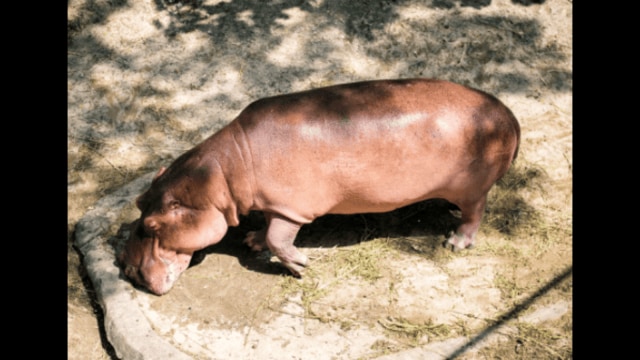📣 For more lifestyle news, click here to join our WhatsApp Channel and also follow us on Instagram
What are pygmy hippos and where to find one
A baby pygmy hippopotamus named ‘Hugo’ has made history as the first of its kind born at Michigan’s John Ball Zoo. Native to West Africa, pygmy hippos are rare, forest-dwelling herbivores with fewer than 2,500 individuals left in the wild, primarily found in Liberia and Guinea.
 Native to West Africa, these rare, solitary herbivores are smaller cousins of the common hippopotamus and thrive in dense forests and freshwater habitats. (Freepik)
Native to West Africa, these rare, solitary herbivores are smaller cousins of the common hippopotamus and thrive in dense forests and freshwater habitats. (Freepik) The John Ball Zoo in the United States has officially named a baby pygmy hippopotamus ‘Hugo’. The zoo is located in Michigan and is named after John Ball, who donated 40 acres of his land to build a public park that was later developed as a zoo.
‘Hugo’ made history on September 3 by becoming the first pygmy hippo to be born at the zoo.
Let us take a closer look at what pygmy hippos are.
📌 Hippos are mostly found in East Africa, while pygmy hippos (Choreopsis liberiensis) are found in West Africa. These animals can be mostly found in Liberia, with smaller populations in Guinea.
📌 Baby pygmy hippos weigh around 550 pounds, the same as domestic pigs and lions.
 These animals are about one-tenth the size of an adult hippopotamus. (Freepik)
These animals are about one-tenth the size of an adult hippopotamus. (Freepik)
📌 These species require healthy forests and freshwater to survive. Fewer than 2,500 pygmy hippos are thought to exist in the world.
📌 These are solitary and secretive creatures roaming around in the wild.
📌 They intimidate their potential predators or enemies by opening jaws and baring their canine teeth.
📌 They are a stout animal with a relatively small and rounded head and thick blackish skin. Just like the larger Nile Hippo, they excrete large reddish droplets that soften and protect their skin.
📌 Pygmy hippos have four stomach chambers and spend a lot of time filling them — as much as 6 hours per day. They are herbivores feeding on grasses, roots, stems and leaves of young roots and trees and other vegetation.
(With inputs from World Wide Fund & Zoo New England)
📣 For more lifestyle news, click here to join our WhatsApp Channel and also follow us on Instagram
- 01
- 02
- 03
- 04
- 05



























